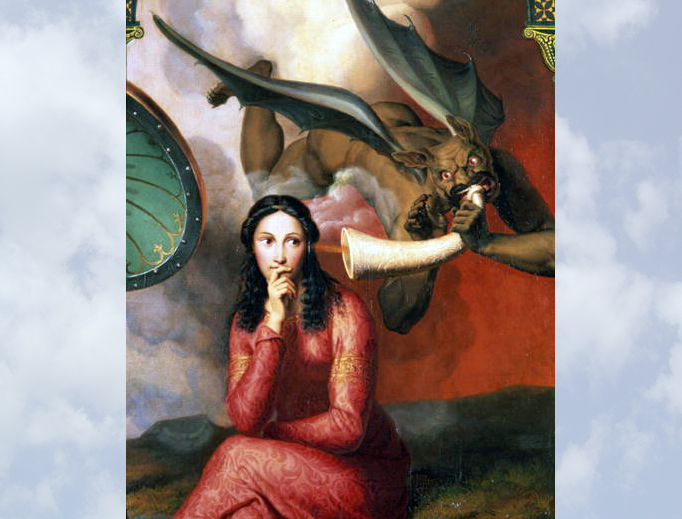How to Avoid Hidden Pitfalls When They're Disguised as Prayer

Do We Really Understand Prayer? If you were to stand up before any parish and ask folks to raise their hands if they understand what prayer is, you would likely see every hand raised. If you then asked for hands to rise if they could articulate the distinction between vocal prayer and meditation, a much smaller group would emerge. Then, if you asked for hands of anyone who would be able to clearly explain mental prayer or contemplative prayer, the raised hands would be very sparse, if any surfaced at all.
As Catholics, we claim that being in a right or authentic relationship with God is the purpose of our existence. How is it then, that so few of us really understand how to converse with the God by whom and for whom we were created? How is it that our understanding of prayer is so superficial? How is it that so many of us don’t have a daily practice of communing with God in prayer?

Spiritual Poverty is Damning Souls: Through my work at the Avila Institute and SpiritualDirection.com, I have found this epidemic of spiritual ignorance to be without bounds in the Church. This is not a note of condemnation, but one of deep concern. It has also been the concern of the spiritual masters of the Church for more than a thousand years. St. Alphonsus Liguori, a Doctor of the Church, went so far as to say that one cannot be saved without the practice of mental prayer. This bold claim is echoed in many ways through other spiritual Doctors of the Church. Unfortunately, in our time we are particularly impoverished in our understanding of the spiritual life and especially of the deeper realms of prayer.
The Devil's Contemplatives are Growing in Number: In one of the most popular treatments of prayer outside of the Doctors of the Church, The Cloud of Unknowing, the anonymous author speaks of the “devil’s contemplatives.” St. Teresa of Avila in her fifth mansion of her great work, The Interior Castle, also reflects that these are people who pursue prayer in a way that is spiritually dangerous. Some of the most popular books on prayer and spirituality of our time are multiplying the devil’s contemplatives in droves. Are those seeking God in prayer bad people? Not likely. They are just spiritually hungry and sincerely reaching out for sustenance. They are ignorant of the Catechism, Church Tradition, and the spiritual Doctors of the Church. Thus, as they seek in their great thirst, they find poisoned wells and drink vigorously without understanding that the fine tasting but tainted water, though it will often give us a temporal feeling of well-being, will lead to spiritual damage and even death.

Authentic Prayer Brings Peace and Holiness: This is one of the many reasons I founded SpiritualDirection.com. Years ago, I searched on the web and found so much of Catholic spirituality conflated with teachings from the non-Christian East, the New Age movement, and many other poisonous sources, that I felt I had to do something about it. This is also why the Avila Institute for Spiritual Formation emerged, out of the cries of the regular readers of SpiritualDirection.com who thirst for more. Not just more of the junk on most bookstore shelves today, but more of St. Teresa of Avila, St. John of the Cross, St. Therese of Lisieux, St. Ignatius of Loyola and so many more. The wells of transformational wisdom provided by these saints are unfathomable and pure. These wells never produce the “devil’s contemplatives”, but instead they produce saints.
Pure Water from Pure Wells: My most exciting and latest effort to provide the antidote to the devil’s contemplative poison is entitled “Into the Deep… Finding Peace through Prayer.” I wrote this book for Matthew Kelly as a way to accomplish the impossible; to write a book that speaks to:
(1) those who know they need to begin a prayer life,
(2) those who have begun a serious effort of prayer, and
(3) those who are ready to try again. From all indications of those who have reviewed the first draft of this work, the fruit of much prayer itself, we have succeeded.
Does all of this seem a bit self-serving? If so, it is important to note that all of the profits made from the sale of this book, as associated with me and the apostolate I oversee, are used in some way to serve the faithful poor—to ensure that those who truly desire authentic formation are never turned away because of material poverty.
An Opportunity for You: If you would like to learn more about this book and how to find peace in prayer and to deepen your prayer life, I will be hosting a webinar/mini-course on this coming Monday, July 18 at 8:00 p.m. Eastern. You can join the mini-course live or via recording. To register, CLICK HERE. I look forward to seeing you there.













